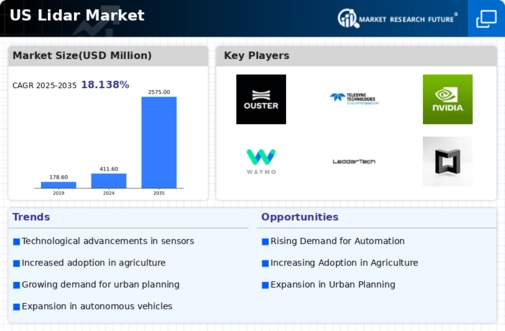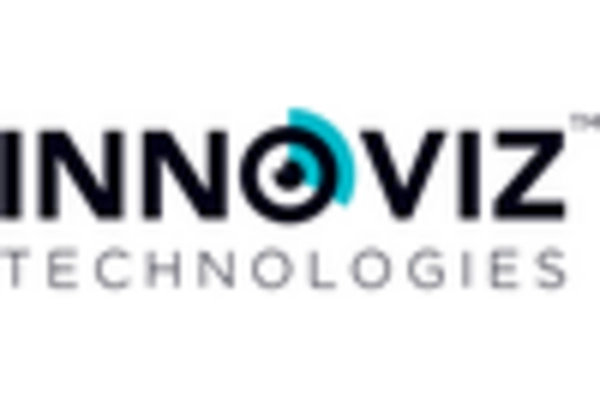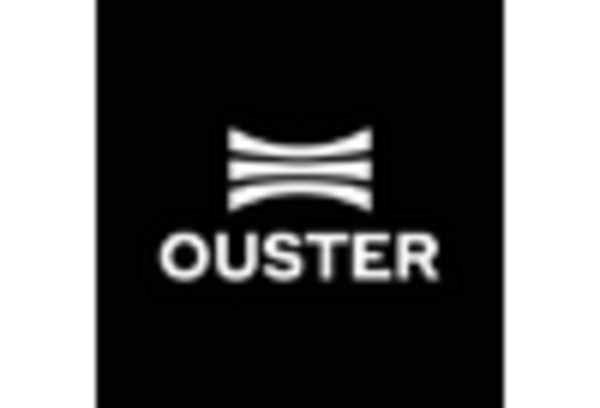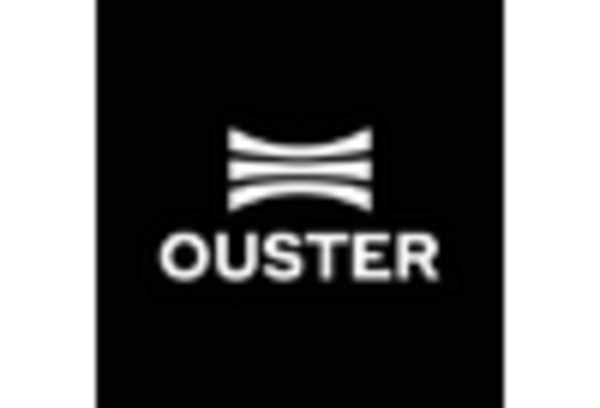Government Initiatives and Funding
Government initiatives aimed at promoting smart city projects and infrastructure modernization are propelling the lidar market. Federal and state funding for transportation and urban development projects often includes provisions for advanced technologies like lidar. For instance, the US government has allocated billions in infrastructure spending, which is likely to enhance the adoption of lidar for mapping and monitoring purposes. This financial support not only stimulates market growth but also encourages public-private partnerships, fostering innovation within the lidar market. The anticipated increase in government contracts could lead to a market valuation exceeding $3 billion by 2027.
Growing Applications in Agriculture
The application of lidar technology in agriculture is emerging as a significant driver for the lidar market. Farmers and agronomists are increasingly utilizing lidar for precision agriculture, which enhances crop management and yield prediction. By providing detailed topographical data, lidar assists in optimizing irrigation and fertilization practices. The agricultural sector in the US is projected to invest heavily in lidar technology, with estimates suggesting a market growth of around 20% annually. This trend reflects a broader recognition of the benefits of data-driven decision-making in agriculture, thereby reinforcing the importance of lidar in the lidar market.
Rising Demand for Autonomous Vehicles
The demand for autonomous vehicles is significantly influencing the lidar market. As automotive manufacturers strive to enhance vehicle safety and navigation systems, lidar technology has become a critical component. The integration of lidar in autonomous vehicles allows for real-time environmental mapping, which is essential for safe navigation. In the US, the market for lidar in automotive applications is expected to grow at a CAGR of 30% over the next five years, driven by the increasing investments in self-driving technology. This trend underscores the pivotal role of lidar in shaping the future of transportation within the lidar market.
Technological Advancements in Lidar Systems
The lidar market is experiencing a surge in technological advancements, particularly in sensor capabilities and data processing techniques. Innovations such as solid-state lidar and enhanced algorithms for data interpretation are driving the market forward. These advancements enable higher resolution and accuracy in mapping and surveying applications. As a result, the market is projected to reach approximately $2 billion by 2026, reflecting a compound annual growth rate (CAGR) of around 25%. This growth is indicative of the increasing reliance on lidar technology across various sectors, including automotive, aerospace, and urban planning, thereby solidifying its position in the lidar market.
Increased Focus on Environmental Sustainability
The growing emphasis on environmental sustainability is influencing the lidar market, particularly in applications related to forestry and land management. Lidar technology enables accurate assessment of forest biomass and terrain, which is crucial for effective resource management and conservation efforts. As organizations and governments prioritize sustainability initiatives, the demand for lidar solutions is expected to rise. The market for lidar in environmental applications is projected to grow at a CAGR of 22% over the next few years, driven by the need for precise data in environmental monitoring and compliance. This trend highlights the integral role of lidar in supporting sustainable practices within the lidar market.
















Leave a Comment